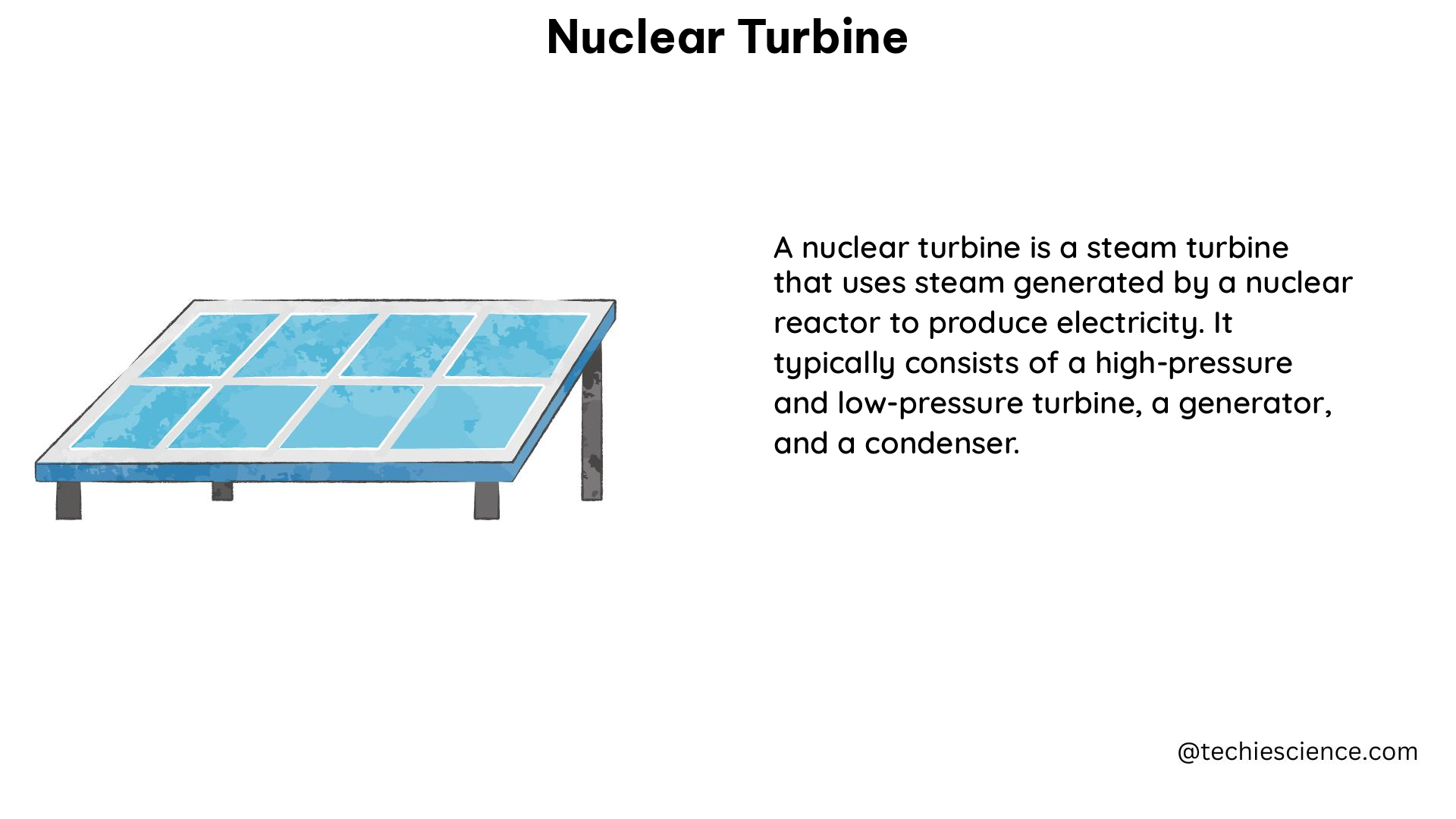Nuclear turbines are the heart of nuclear power plants, responsible for converting the immense thermal energy generated by nuclear reactions into mechanical energy, which is then transformed into electricity. These engineering marvels are designed to operate with unparalleled efficiency and reliability, making them a crucial component in the global pursuit of sustainable energy solutions.
Technical Specifications of Nuclear Turbines
Power Output
Nuclear turbines typically have a power output ranging from 500 megawatts (MW) to 1,600 MW, with the largest units capable of generating enough electricity to power hundreds of thousands of homes.
Rotational Speed
The rotational speed of nuclear turbines varies depending on the type of turbine. Steam turbines typically operate at 1,500-1,800 revolutions per minute (RPM), while gas turbines can reach speeds of 3,000-3,600 RPM.
Efficiency
The efficiency of nuclear turbines is a crucial metric, as it determines how much of the thermal energy generated by the reactor is converted into usable mechanical energy. The best-in-class nuclear turbines can achieve efficiencies as high as 40%, meaning that 40% of the reactor’s thermal output is transformed into rotational power.
Turbine Size
The size of a nuclear turbine can be quantified by its physical dimensions. The diameter of the turbine rotor typically ranges from 3 to 5 meters, while the length of the turbine shaft can vary from 15 to 30 meters. These massive components contribute to the overall weight of a nuclear turbine, which can reach up to 1,000 tons, with the turbine rotor and generator rotor being the heaviest parts.
Operational Characteristics of Nuclear Turbines

Load Factors
Nuclear turbines are designed to operate at full power for extended periods, with load factors (the ratio of actual power output to maximum possible power output) ranging from 70% to 90%. This high utilization rate is a testament to the reliability and efficiency of these engineering marvels.
Vibration Monitoring
Ensuring the safe and efficient operation of nuclear turbines is of paramount importance. Vibration levels are closely monitored, with typical values being less than 0.1 millimeters per second (mm/s). This tight control over vibrations helps to minimize wear and tear on the turbine components, extending their operational lifespan.
Advanced Data Analytics for Nuclear Turbine Optimization
In addition to the core technical specifications and operational characteristics, researchers are exploring innovative data analytics solutions to further enhance the performance of nuclear turbines. A study by Wes Hines of the University of Tennessee, for example, focuses on developing risk-based inferential sensor solutions to support uninterrupted operations during periods of sensor degradation. This approach integrates disparate data sources to provide comprehensive component and process condition assessments, ultimately driving optimal maintenance and capital replacement decisions.
Challenges and Considerations for DIY Nuclear Turbine Projects
While the principles of nuclear turbine operation and design can be studied through educational resources and simulations, the actual construction of a DIY nuclear turbine is a highly complex and regulated process. It requires specialized knowledge, equipment, and permits that are not readily available to the average individual. Attempting to build a nuclear turbine without the necessary expertise and resources would be an extremely dangerous and inadvisable undertaking.
In conclusion, nuclear turbines are engineering marvels that play a crucial role in the generation of clean, sustainable electricity. By understanding their technical specifications, operational characteristics, and the advanced data analytics solutions being developed, we can gain a deeper appreciation for the complexity and importance of these critical components in the nuclear power industry.
References:
- Improving Nuclear Power Plant Efficiency Through Data Analytics, https://www.energy.gov/sites/default/files/2019/12/f69/ne-30-2019-impoving-Nuclear-Power-Plant-Efficiency.pdf
- Safety Goals for the Operation of Nuclear Power Plants, https://www.nrc.gov/reading-rm/doc-collections/commission/policy/51fr30028.pdf
- Simplified approach to determine the requirements of a “flexible nuclear reactor” in power system with high insertion of variable renewable energy sources, https://www.epj-n.org/articles/epjn/full_html/2022/01/epjn210007/epjn210007.html

The lambdageeks.com Core SME Team is a group of experienced subject matter experts from diverse scientific and technical fields including Physics, Chemistry, Technology,Electronics & Electrical Engineering, Automotive, Mechanical Engineering. Our team collaborates to create high-quality, well-researched articles on a wide range of science and technology topics for the lambdageeks.com website.
All Our Senior SME are having more than 7 Years of experience in the respective fields . They are either Working Industry Professionals or assocaited With different Universities. Refer Our Authors Page to get to know About our Core SMEs.